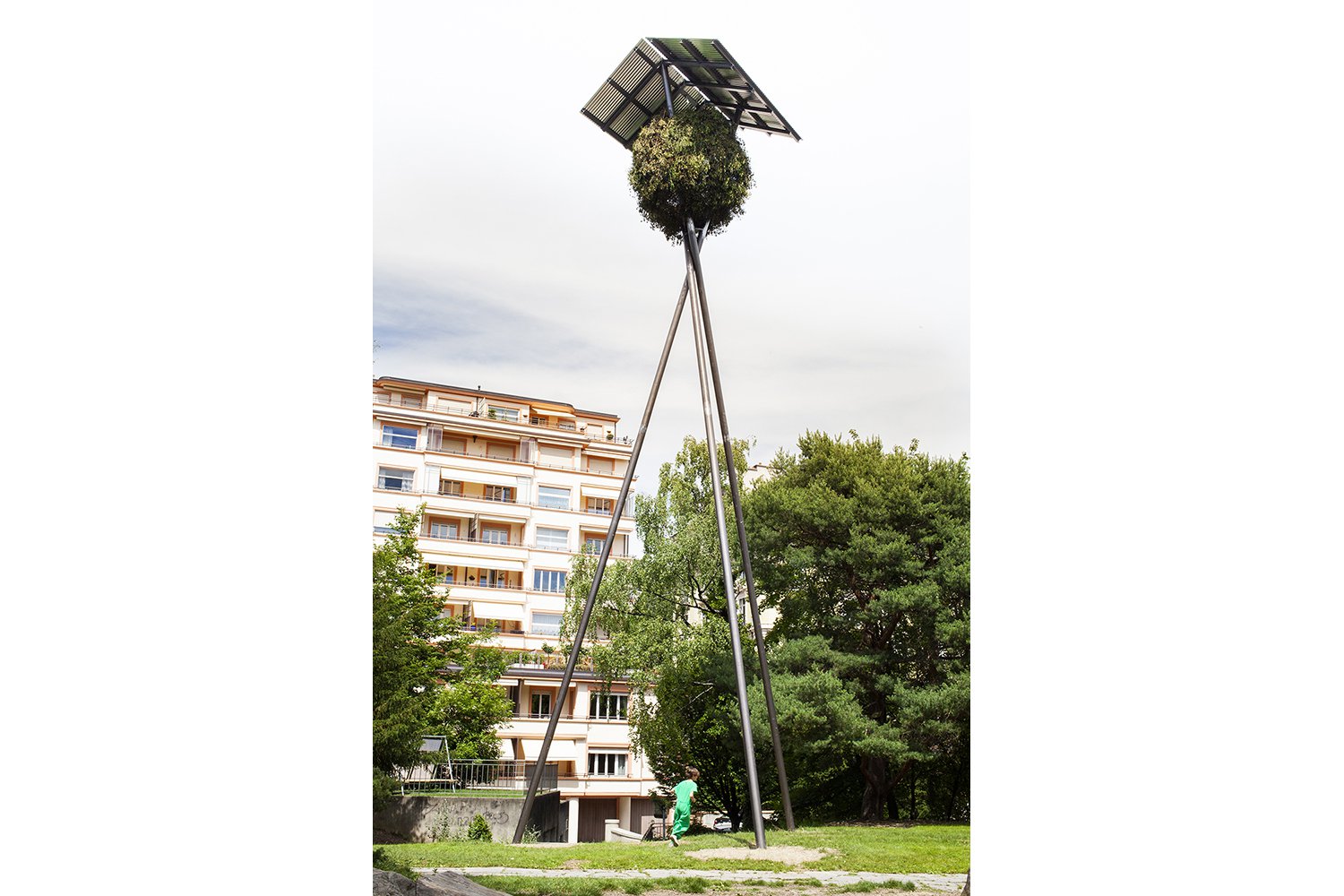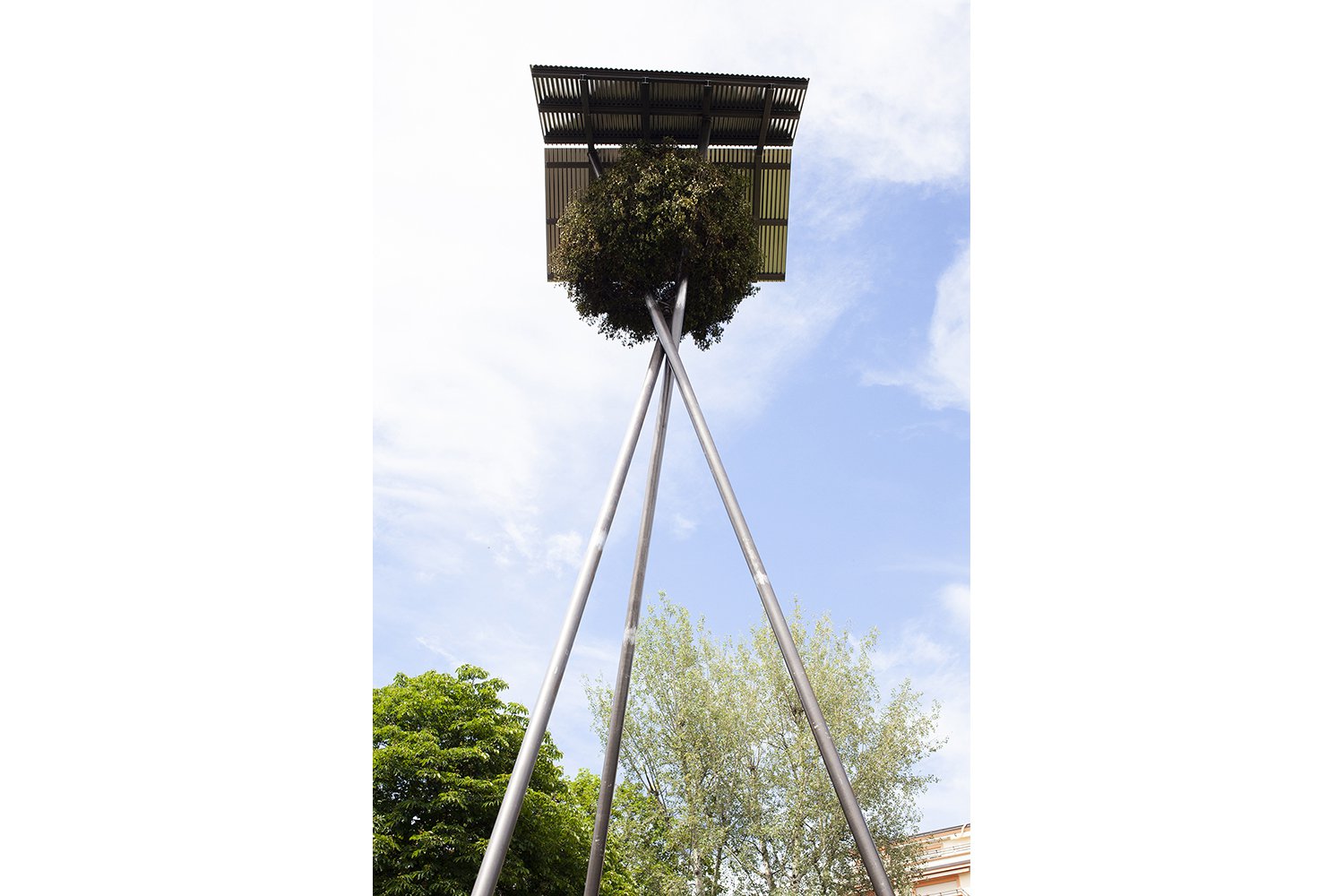Place Messidor, named after the harvest month in the revolutionary calendar, simply had to be fertile. Today however, the quality of the soil contradicts the toponymy. Its grounds are gradually gnawed away by buildings, a school, a large gymnastics hall and a concrete courtyard.
Amour éternel (“Eternal Love”) addresses the use of the soil: how can we spare this non-renewable resource for the long-term? By imitating mistletoe, a plant that uses other plants to live above ground! Norse mythology defines mistletoe as “a being that is not really terrestrial”. As an epiphyte (from Ancient Greek ἐπί, above, and φυτόν, plant), it has indeed mastered the art of densification and climbs to seek the best light quality — a factor that limits the growth of plants on the ground. Aside from this talent, it is meant to bring peace, happiness and love. It is said that in order to gain eternal love, lovers should kiss under the mistletoe.
The Parc de l’Amour éternel becomes the epicentre of a broader action: an 18 metre high birdhouse attracts birds who love mistletoe berries which they transport to sow further on, thus revealing a potential for high-rise densification. A poetic prefiguration of a sustainable and economical city that respects its soil?
Authors
Comte/Meuwly Architectes, Adrien Comte, Adrien Meuwly (CH)
huber.huber, Reto Huber & Markus Huber (CH)
Von Pechmann Landschaftsarchitekten, Johannes von Pechmann (CH)
Partners & Implementation
Fondation du Jubilé de la Mobilière
Stephan SA
Schnetzer Puskas Ingenieure AG
Debrunner Acifer SA Romandie
Krinner Romandie SA
PREFA Suisse
Service des parcs et domaines
List of Plants and Materials
Gui, Viscum album

